Friday 30 June
Rose about 2 a.m., having resolved to go on my own hook, unimpeded by waiting for others, to draw the Katavothra range before the sun was up. So before 3 a.m. I was a long way down towards the plain, and drew till 4 {sketch 98} — a magnificent bit of scenery, all as yet dark and solemn. These were the sounds accompanying: far barking dogs, clattering storks, tinkle of innumerable goat-bells, blow bugles.
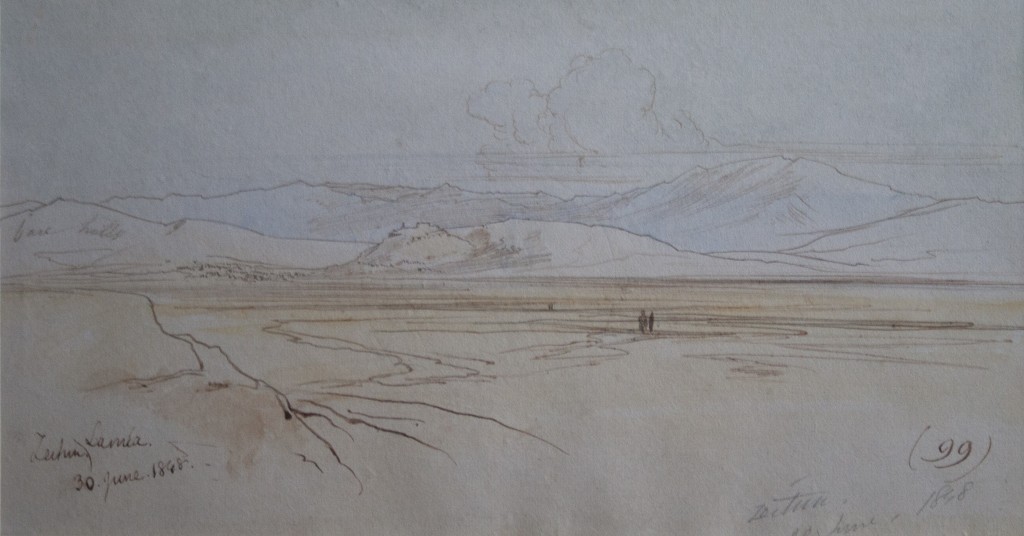
Private Collection
Came up and breakfasted. This khan is not at all bad, barring the row the many soldiers make on all sides, particularly when they sing (so to speak). (Khan so called generally, because one tries to live there, but can’t!) We didn’t go off till 5.30 a.m. — and hot it was along the plain — grasshoppers to boot. Hotter and hotter than ever to the Spercheius, about which were pretty bits of scenery, and, looking back, Zeituni showing like a border town, which it is. On the bridge of Alemanni I drew {sketch 101}– it was broiling — horses meanwhile in the river. C. and Janni rode on soon, after the baggage, I drew again. Not long after we entered the marsh, on the paved road running just below the cliffs — stretch of marshy ground towards the gulf or sea.
Walking on, I came to the hot springs covering all the slope from cliffs to sea with white crust. {sketch 103?} Just beyond was Janni, pitching the tent. Drank at a fountain — query that of the Spartans.

Private Collection
Drew the “Straits,” though they are not much of “Straits” now {sketch 104?}, and mooned about with C.M.C. along the side of the blue, hot lake.

TypDr 805.L513.48e, by permission of the Houghton Library, Harvard
Dinner at 11 a.m., and now I am lying below the tent, the vast foreshortened mountain above, fringed with underwood and pine ad infinitum on a ground of purple rock. Doves coo. Slept, woke at 1.30. Fine and picturesque peasants at fountain. Leeves goeth back to Zeituni, to my great pleasure. Janni and luggage went on ahead. Church, I, two horses and Paniotti, a new man, ascended for a long while by pleasant, shady low-wooded paths, with views all over the Gulf. Once we drew — the (narrow) plain below the Thermopylae hills, which are really exquisite! — the rich unfoldedness of the purple plain, and the immensity of the Katavothra range! — altogether one of the most splendid scenes I ever drew. {sketch 105?} Onward — dells with water, and hills with oak, and lilac hemp, blooming myrtle, lentisk, hollyhock and cistus. An hour before sunset we had climbed up a rocky ravine, above the orange coloured sides of which the Castle of Bodonitza had long been visible. This ravine was surprising as to colour — lit up by the last sunlight, the richest apricot, with tufts of green foliage and overhanging oaks, and bright or dark pines feathering, down, down, down, to an abyss shadowy — dark vegetation and gray rocks, beyond the golden plain, and the lilac sea and hills. Farther on, the sun having set, we descended to a valley with a lovely rushing fountain, near a village where the women were dressed like those of Atina[45] — and dogs, such dogs, came out devouringly.
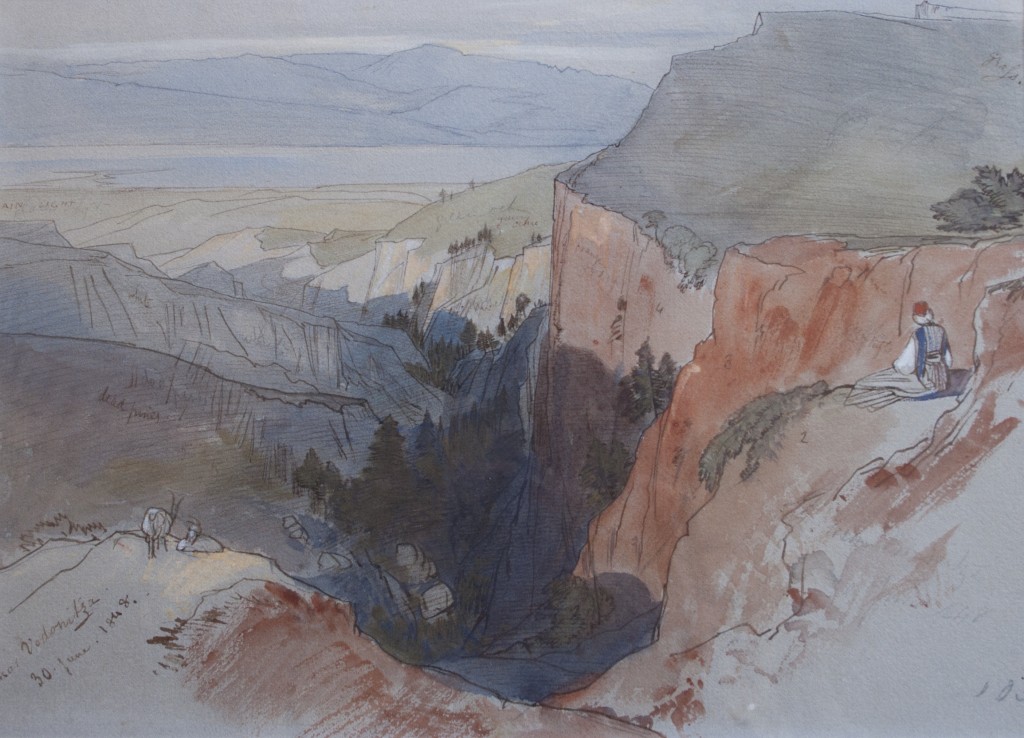
Private Collection
Here we conferred on our future route. It was necessary to reconsider our original plans, which were to take the mountain road under Parnassus, Delphi and Solona. But Lear’s indefatigable energy, especially during the last few days in the deep sunk valley of the Spercheius, in the brooding heat (thermometer at 90°) at the end of June, had tired him out, suffering as he always was from pain in his shoulder — and we considered that it was more prudent now to make for Thebes by an easier route, so as to be within reach of Athens, in case of need.
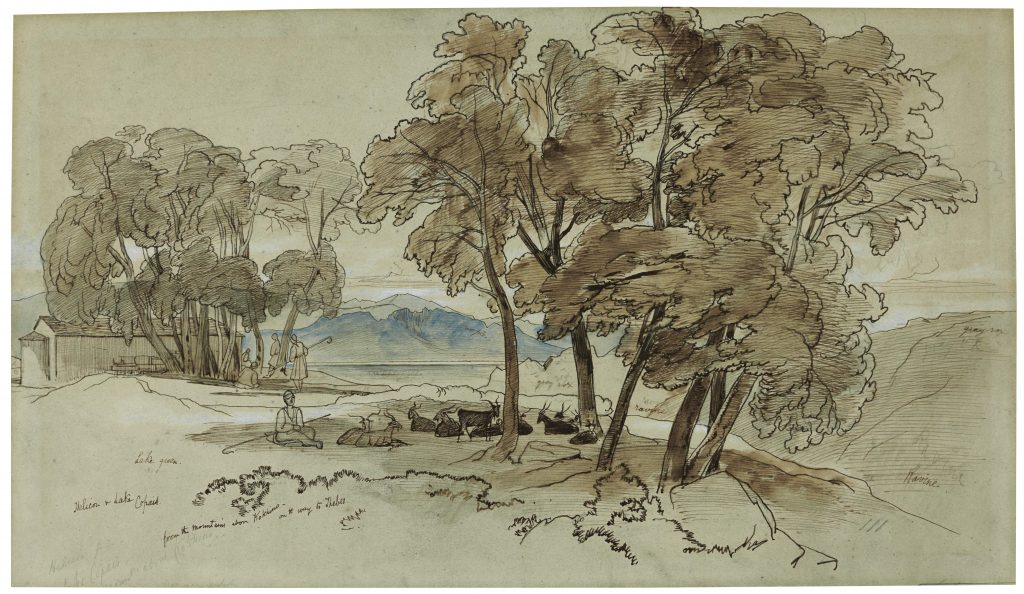
Private Collection
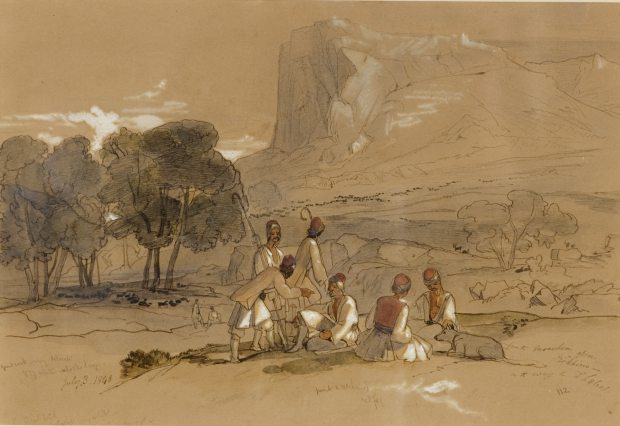
Courtesy of Shepherd Gallery, New York
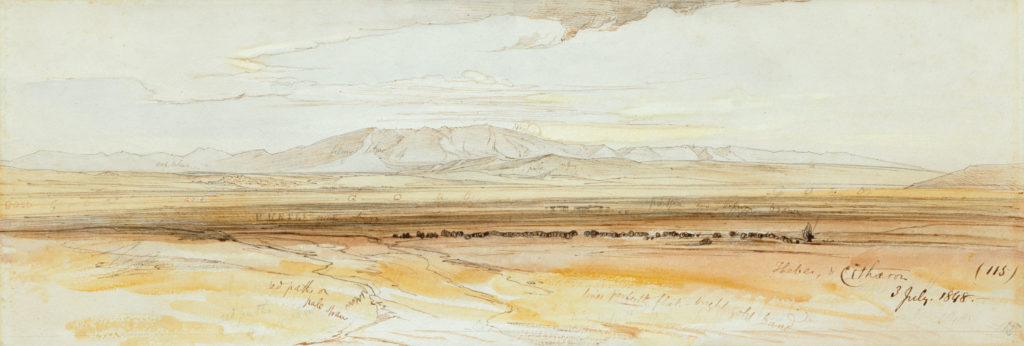
It was well we did so. Though several drawings in the first days of July were done during the ride to Thebes by Atalanti and Proskynas {sketch 107}, and some of his best sketches were made of the plain and mountains round Thebes {sketches 112, 115}, yet some of his latest drawings numbered 115 and 118 contain the evidence of his own notes that he was getting ill.
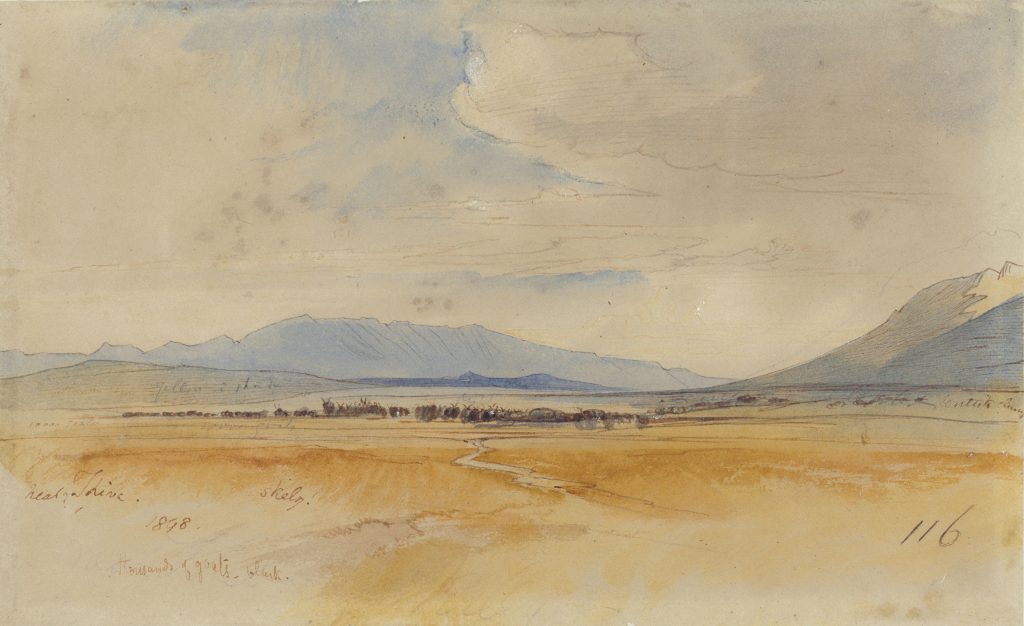
Private Collection
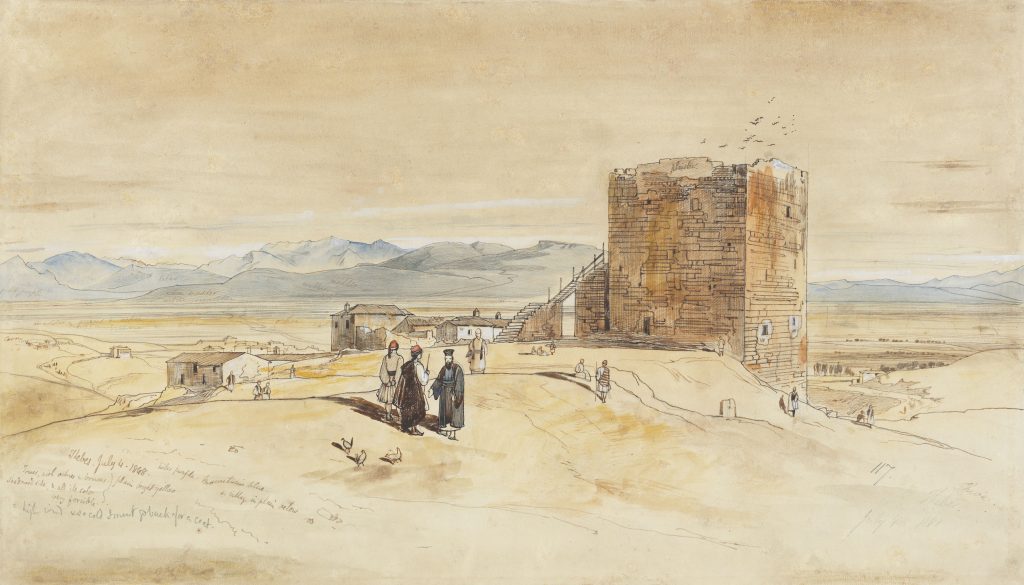
Private Collection
One day in July a high cold blast of North wind swept down the plain, and one of his sketches contains the words “high wind — so cold — must go in for coat,” and on another numbered 118, his last, after a ride to Plataea, “Ah mi sento male!”

This was followed by symptoms of fever which made him helpless and at times delirious and a cause of great anxiety for several days. We were lodged in a Greek house, with quiet hospitality and kindness, and under treatment by the local Greek doctor, before the doctors came out from Athens and he was fit to be removed.

Private Collection
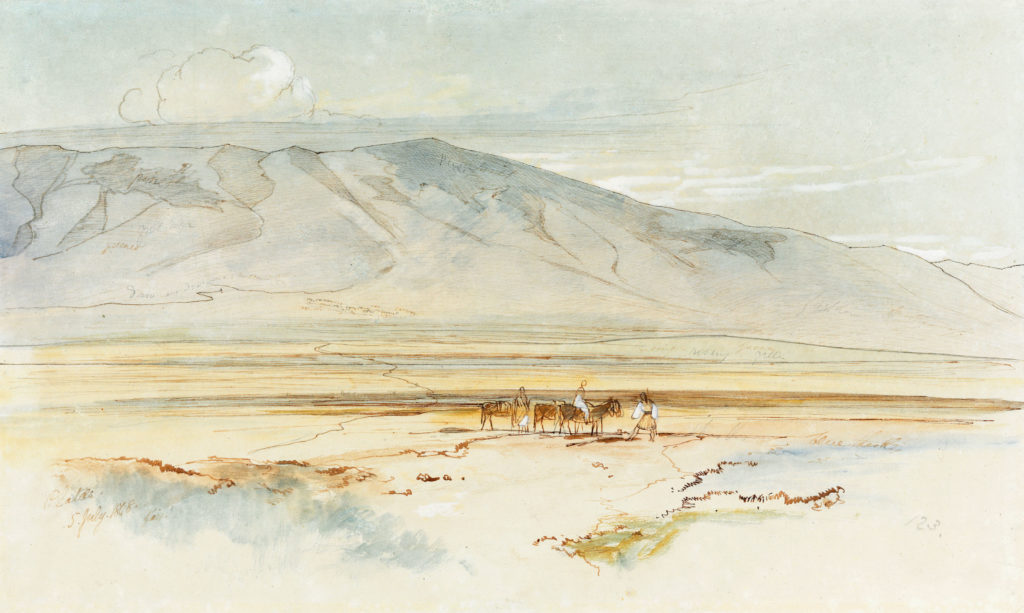
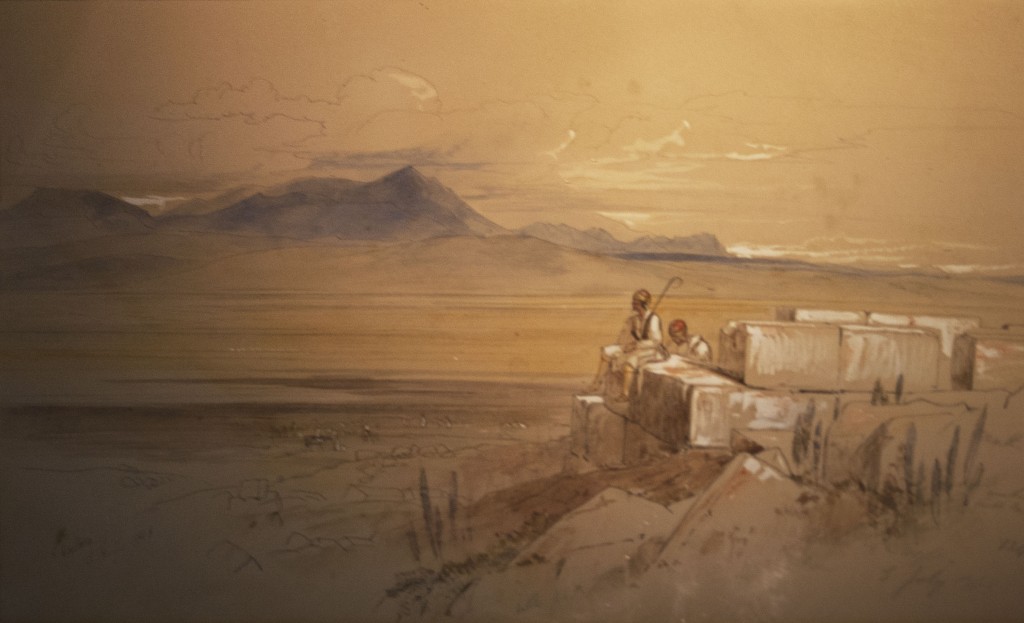
Private Collection
So our tour, which had begun badly, came to an abrupt and unfortunate conclusion. No more need be added to these notes of travel than that it is pleasant after all to recall that the confidences and sympathies which illness called out between us as fellow travellers, under trying circumstances, contributed no less than the brightest remembrance of much enjoyment, to lay the foundation of a friendship which followed and lasted for forty years, until the end of Lear’s life.
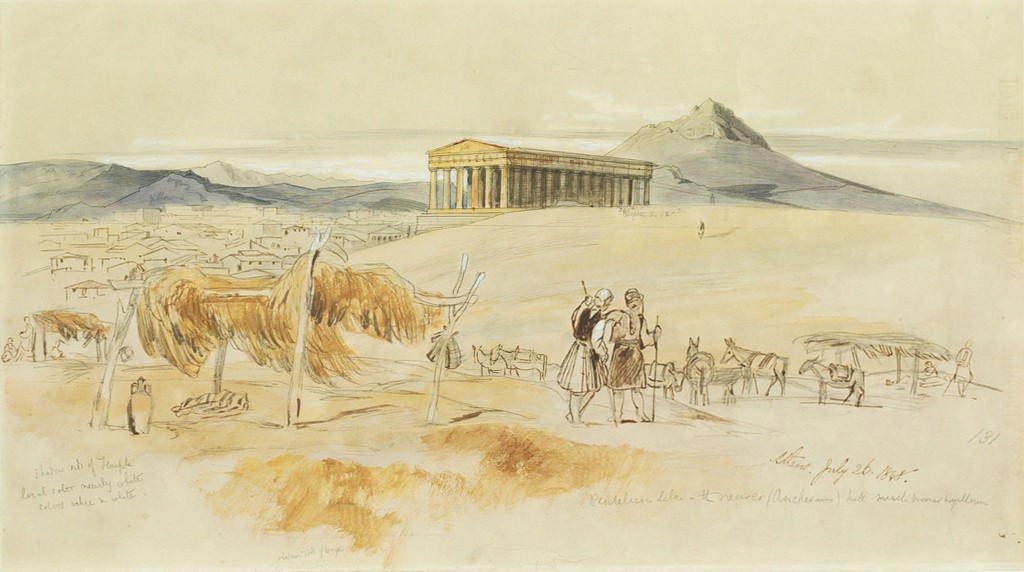
Private Collection
Lear recovered sufficiently at Athens to be able to take some more sketches. {sketches 125, 126, 127, 128-131, 143A} At the end of the month of July we left together in the steamer for Constantinople, and he made the last sketch, the columns of the temple of Athena from the deck as we rounded the promontory of Sunium.
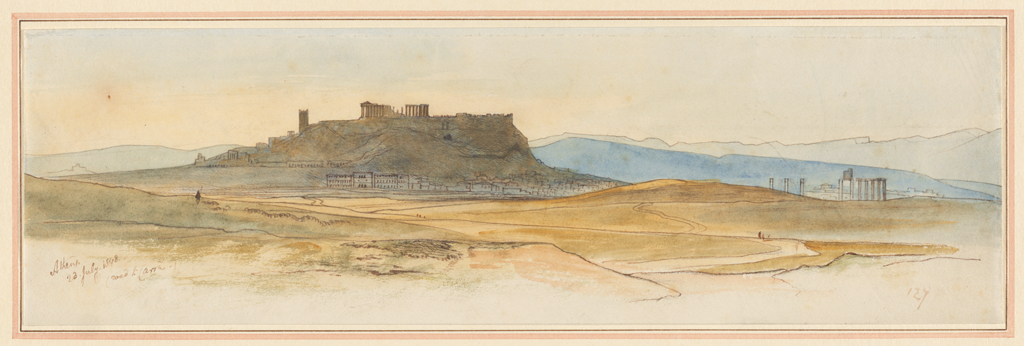
TypDr 805.L513.48z, reproduced by permission of the Houghton Library, Harvard
This short tour, the first episode in his travels, was sufficient to give evidence of his fine artistic taste and poetic imagination, no less than of those qualities as an humorist for which he is better known. It was also shown that the happy outpourings of excellent folly in his “Books of Nonsense” were often produced in resistance to and the reaction from fits of depression and low spirits, the natural outcome in times of ill health and disappointments and failure of attainment to high ideals. My short experience in his companionship gave opportunity to feel the truth and the justice of the memoir which followed his death, by his well-known friend and fellow traveller in Greece next year, of which this is an extract: “From first to last he was, in whatever circumstances of ill-health or difficulty, an indomitable traveller. His sketches were not only the basis of more finished work, but are an extraordinary record in themselves of topographical accuracy, abounding in beauty, delicacy and truth.” [46]
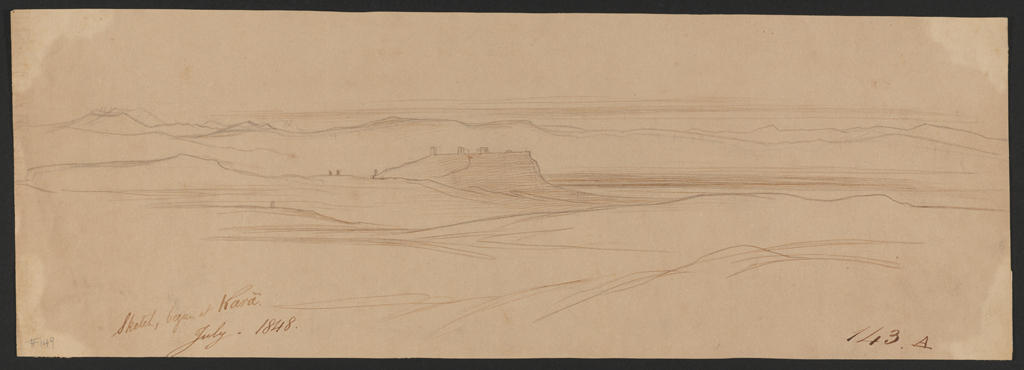
MS Typ 55.26 (469), Reproduced by permission of the Houghton Library, Harvard
[45] In the Abruzzi, which Lear had visited in 1842.
[46] Lear’s lifelong friend Franklin Lushington, who was to travel with him in the Peloponnese in 1849, is given the last word; Church is quoting from the entry on Lear by “F.L.” in the eleventh edition of the Encyclopaedia Britanica (1911).
